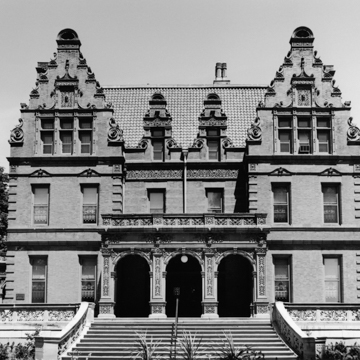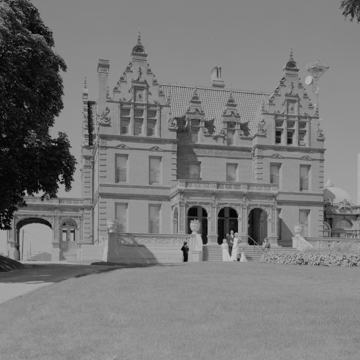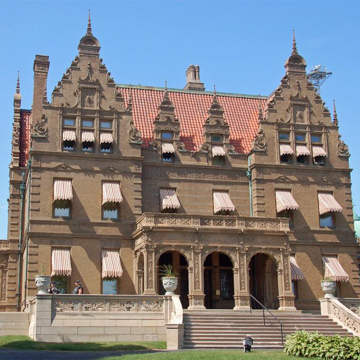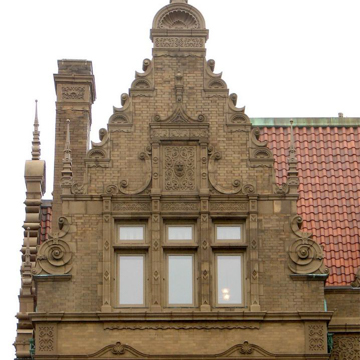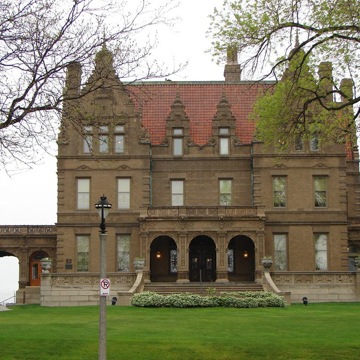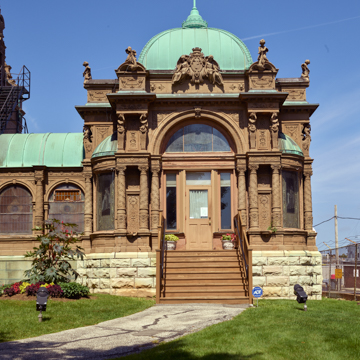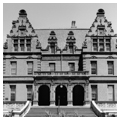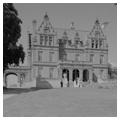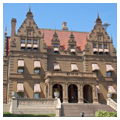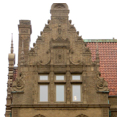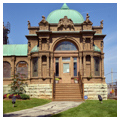The Frederick Pabst Mansion is one of Milwaukee’s crown jewels. Built for Captain Frederick Pabst, whose brewing company was the world’s largest at the turn of the twentieth century, the two-and-a-half-story Flemish Renaissance Revival house echoes sixteenth-century Flemish architecture. Its exterior terra-cotta ornamentation imitates carved brownstone, and delicate terra-cotta scroll-work trims the steeply pitched, shaped gables, placing it among the most academic examples of this style in America. The arcaded front porch is clad in terra-cotta molded into strap-work and floral ornament. The neo-Baroque domed pavilion at the east end of the house originally was the Pabst Brewing Company’s pavilion at the World’s Columbian Exposition of 1893 in Chicago. After the fair, it was shipped back to Milwaukee and added to the mansion for a summerhouse, but it was later converted into a chapel. After Pabst died in 1904, and following his wife Maria’s death in 1908, the Milwaukee archdiocese purchased the building for the archbishop’s residence. The archdiocese sold the mansion in 1975 to a fledgling preservation society, Wisconsin Heritages, Inc., which restored and preserved the house as a house museum. Inside the house, visitors find late-nineteenth-century interiors, including some of the era’s finest surviving woodwork and wall treatments.
You are here
The Frederick Pabst Mansion
If SAH Archipedia has been useful to you, please consider supporting it.
SAH Archipedia tells the story of the United States through its buildings, landscapes, and cities. This freely available resource empowers the public with authoritative knowledge that deepens their understanding and appreciation of the built environment. But the Society of Architectural Historians, which created SAH Archipedia with University of Virginia Press, needs your support to maintain the high-caliber research, writing, photography, cartography, editing, design, and programming that make SAH Archipedia a trusted online resource available to all who value the history of place, heritage tourism, and learning.


